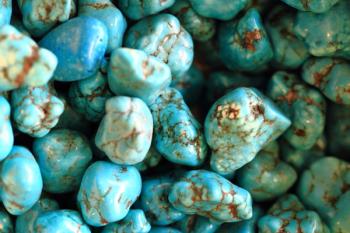
Best of the Week: SciX Interview, Raman Imaging, Diagnosing Brain Disorders
Top articles this week include another SciX interview with, using Raman imaging to measure the impact of glucose on cancer cells, and diagnosing brain disorders.
This week, Spectroscopy published various articles that covered many topics in analytical spectroscopy. Along with covering many spectroscopic techniques, such as Raman spectroscopy and chemometric analysis. The articles published this week covered many core industries, including cancer diagnosis, biological analysis, and space exploration.
Below, we’ve highlighted some of the most popular articles, according to our readers and subscribers. Happy reading!
Jason Dwyer of the University of Rhode Island has been named the recipient of the American Electrophoresis Society’s Mid-Career Award, which honors exceptional contributions to the field of electrophoresis, microfluidics, and related areas by an individual who is currently in the middle of their career (1). Dwyer recently down with Spectroscopy to talk about his career and what winning this award means to him.
This article discusses a study that used non-invasive Raman spectroscopy to examine how glucose affects metabolic processes in normal and cancerous brain cells. The research identified specific biomarkers and showed distinct vibrational frequencies that differentiate between normal and cancerous cells (2). Using chemometric analysis, the study confirmed the impact of glucose on lipid droplets, mitochondrial activity, and the nucleus (2). This research provides insights into glucose's role in brain cancer development and offers potential for new diagnostic and therapeutic strategies (2).
This article reviews the potential of liquid biopsy and Raman spectroscopy as diagnostic tools for brain disorders like Alzheimer's, Parkinson's, and traumatic brain injury. Authored by Jeewan C. Ranasinghe, Ziyang Wang, and Shengxi Huang, the study critiques current imaging techniques for their lack of molecular specificity (3). Liquid biopsy, using biofluids, and Raman spectroscopy, which provides detailed molecular information, emerge as promising alternatives. Raman spectroscopy detects disease-specific biomarkers non-invasively, offering early diagnosis and monitoring (3). Despite challenges in clinical application, advancements in Raman spectroscopy and machine learning suggest a promising future for these techniques in revolutionizing brain disorder diagnostics (3).
This article discusses the application of a portable, high-sensitivity Raman spectrometer for monitoring a glycerol-fed, lab-scale E. coli bioprocess producing pharmaceutical compounds. Offline sampling and high performance liquid chromatography (HPLC) analysis provided calibration data for a chemometric model developed with user-friendly, Raman-specific software (4). The model demonstrated the ability to predict concentrations of feedstock, active pharmaceutical ingredients (API), and side products (4). This approach highlights the potential for real-time, continuous, and non-invasive Raman spectroscopy in bioprocess monitoring, facilitating effective process control and intervention (4).
This article discusses the importance of adjusting laser power settings in Raman spectroscopy for detecting bioorganic molecules on Mars. The study highlights that optimized laser power is crucial for accurate detection and identification of molecules such as lipids and amino acids, which are indicators of potential life (5). High-powered lasers can damage samples, while low-powered lasers may produce weak signals (5). The researchers created a spectral library with optimal settings, enhancing the ability of Mars rovers to conduct non-invasive analysis and improving the search for life on the Red Planet (5).
References
(1) Chasse, J. An Interview with AES Mid-Career Award Recipient Jason Dwyer. Spectroscopy. Available at:
(2) Workman, Jr., J. Glucose's Impact on Brain Cancer Cells Unveiled Through Raman Imaging. Spectroscopy. Available at:
(3) Workman, Jr., J. Revolutionary Advances in Diagnosing Brain Disorders: The Promise of Liquid Biopsy and Raman Spectroscopy. Spectroscopy. Available at:
(4) Weber, J.; Latza, A.; Ryabchykov, O.; et al. Real-Time Chemometric Analysis of Multicomponent Bioprocesses Using Raman Spectroscopy. Spectroscopy 2024, 39 (5), 14–22.
(5) Wetzel, W. Using Raman Spectroscopy to Detect Life on Mars. Spectroscopy. Available at:
Newsletter
Get essential updates on the latest spectroscopy technologies, regulatory standards, and best practices—subscribe today to Spectroscopy.





